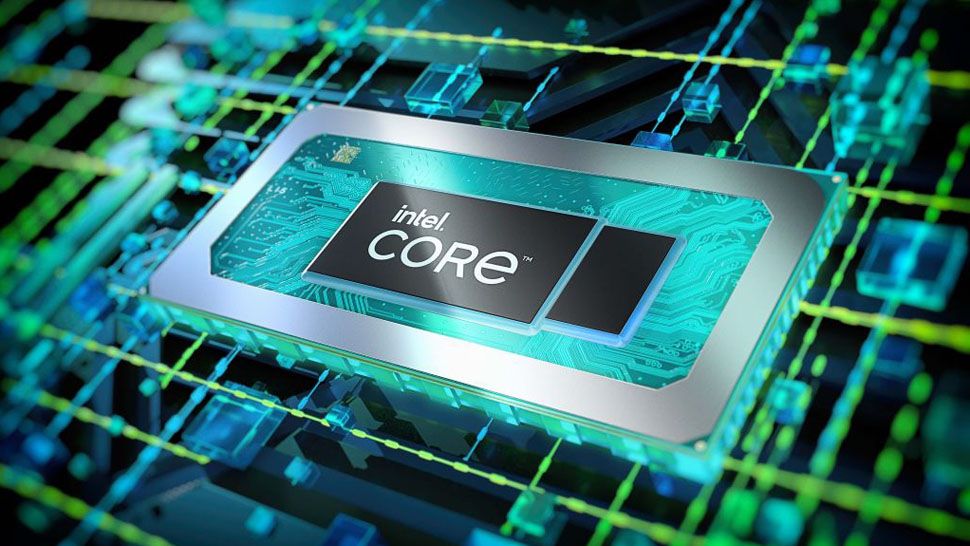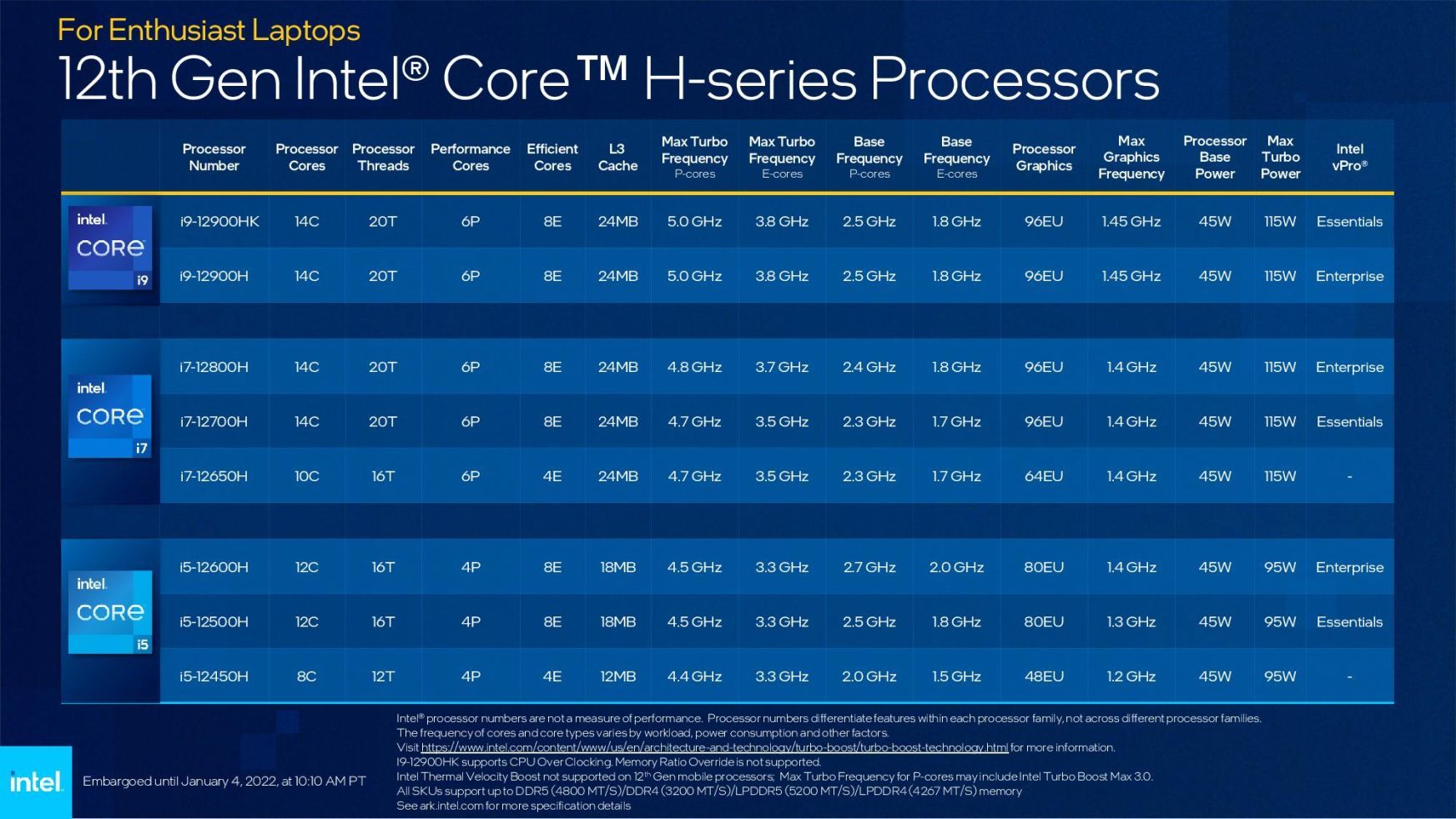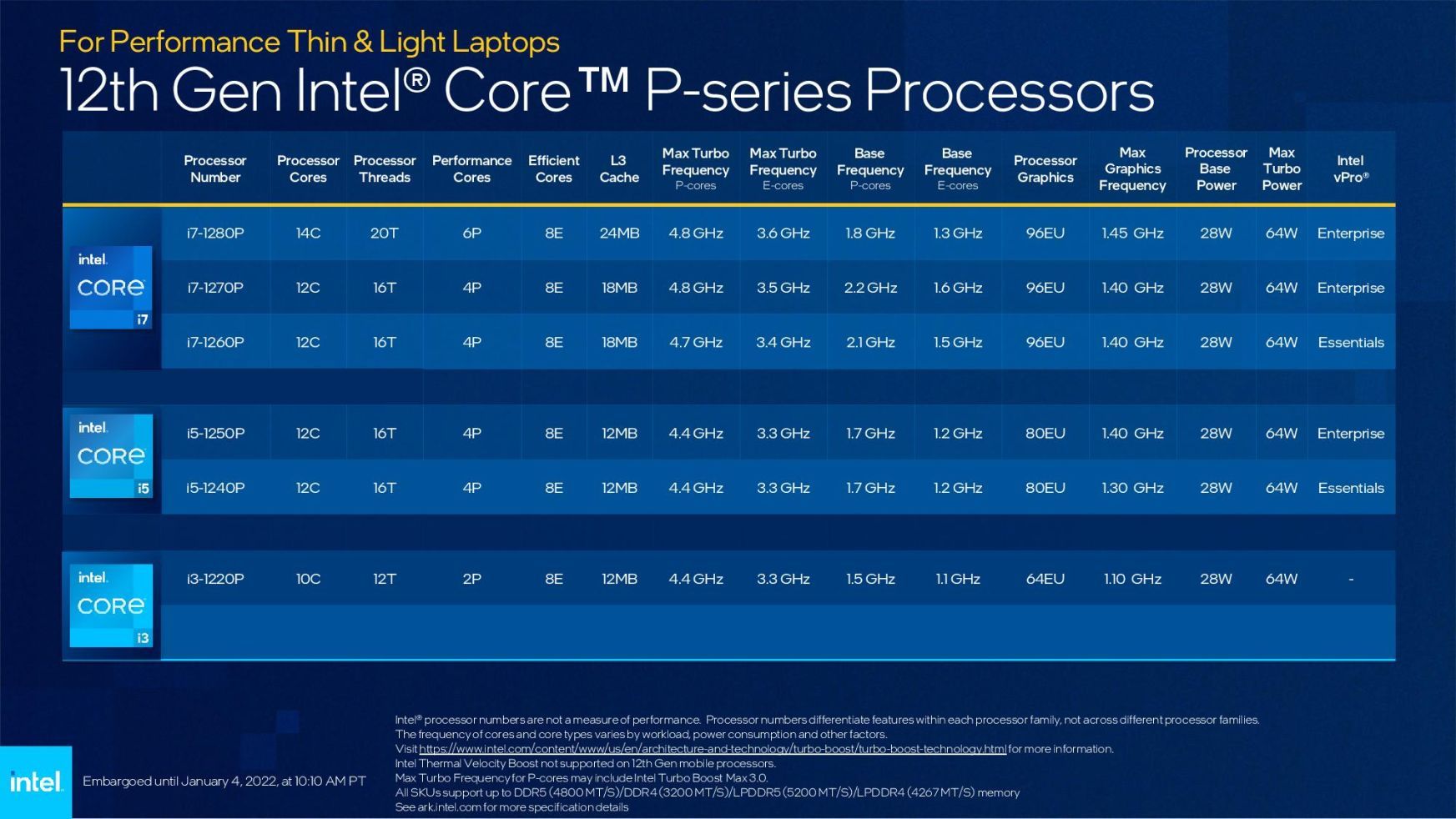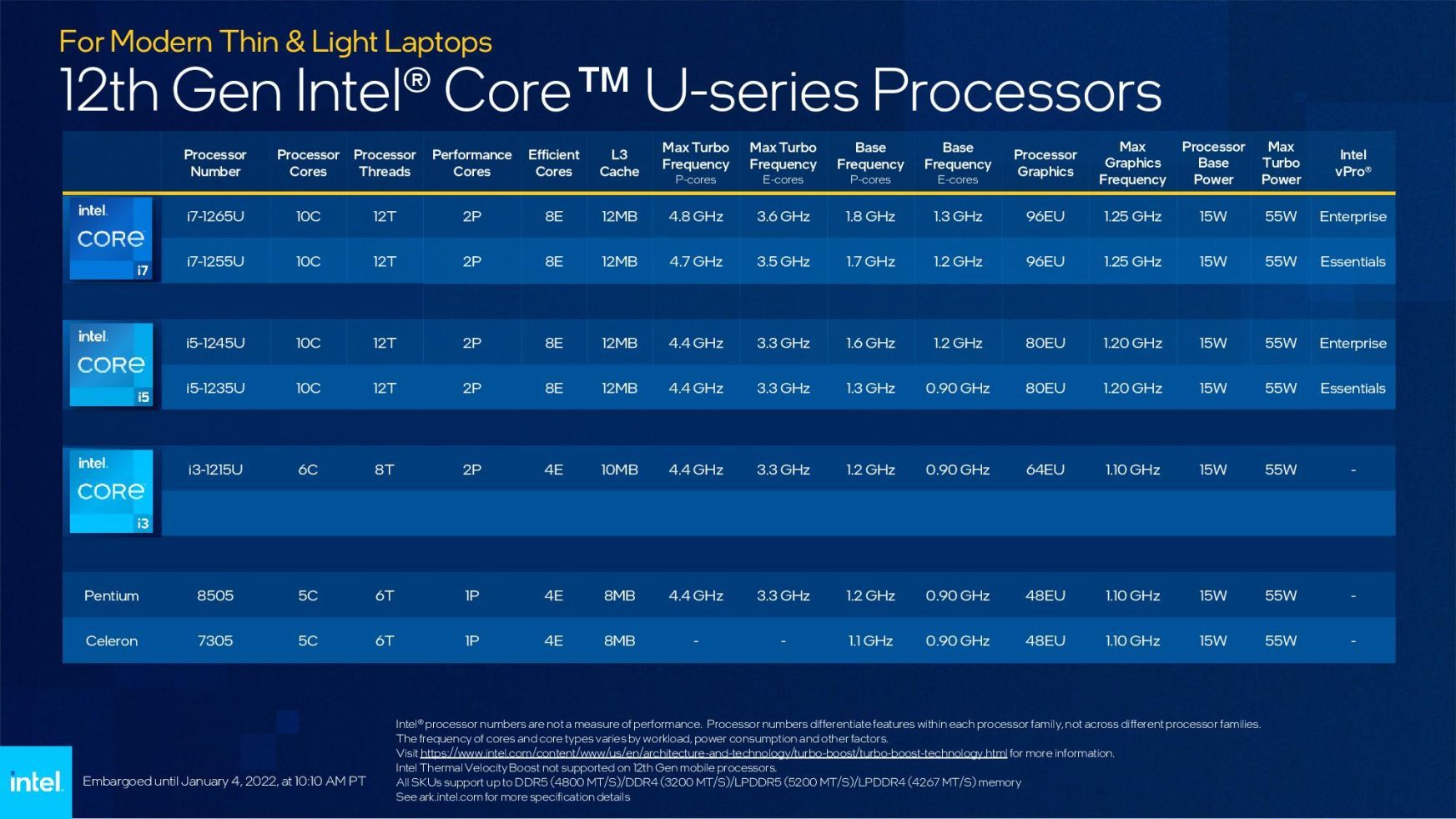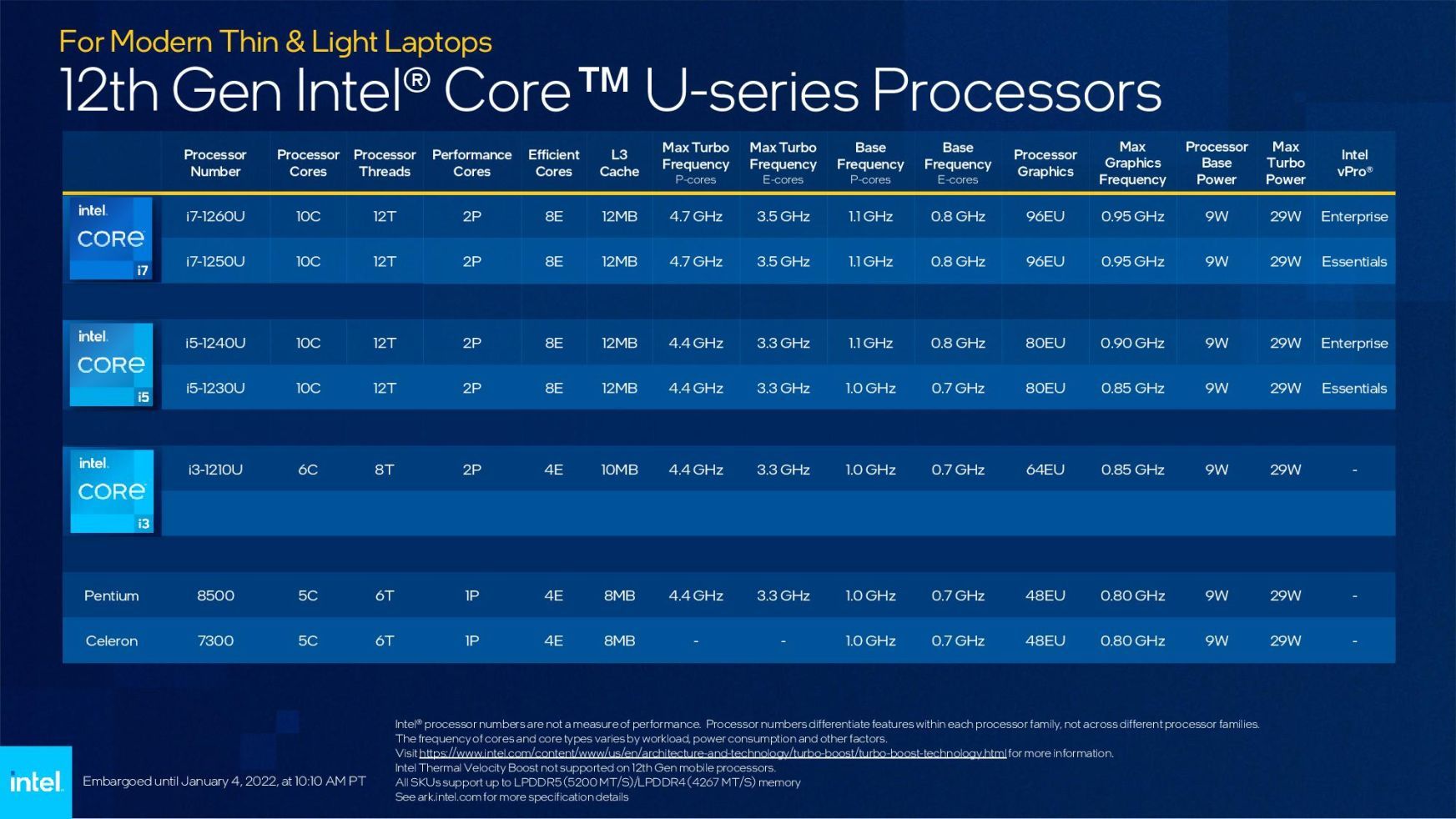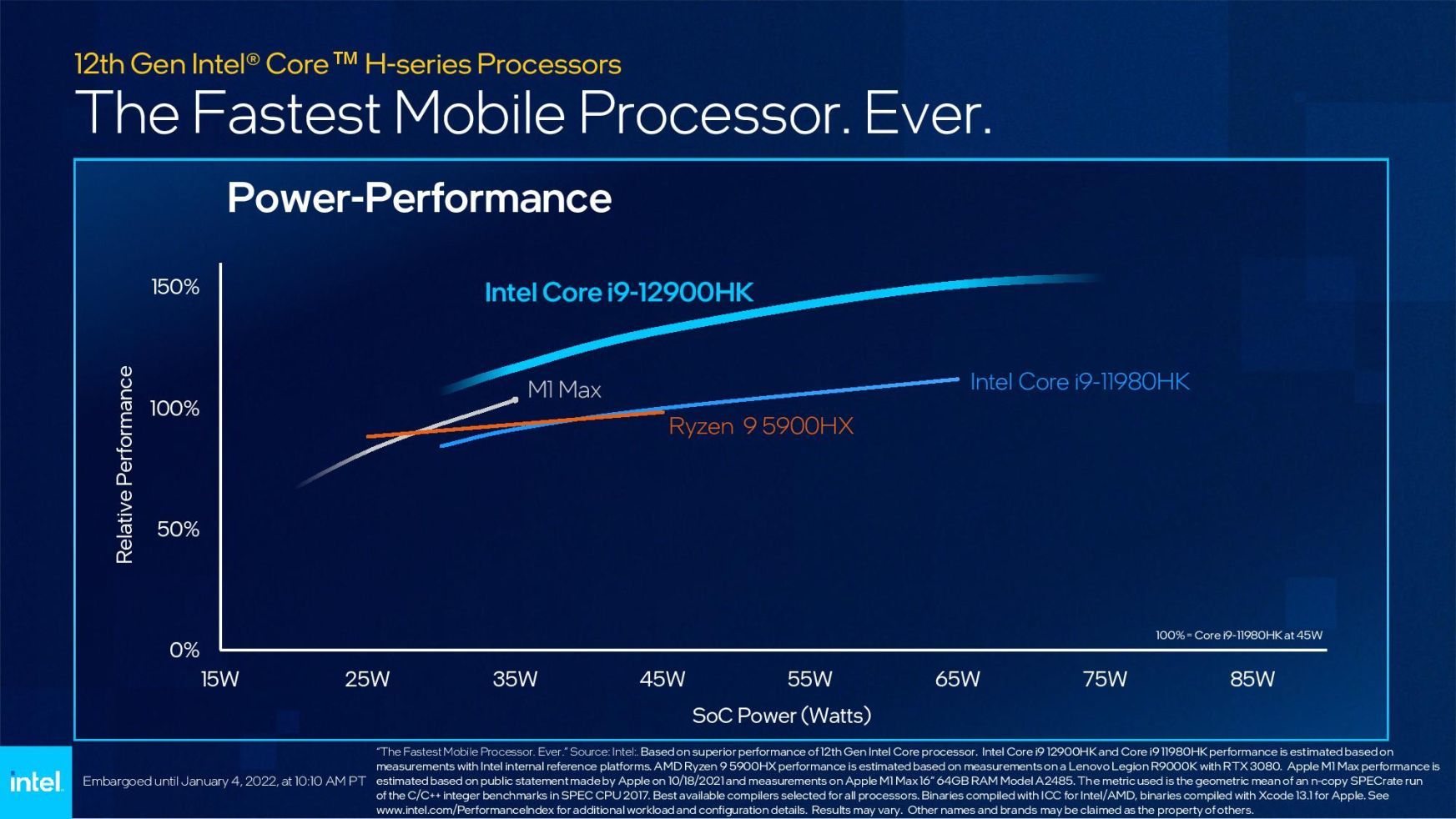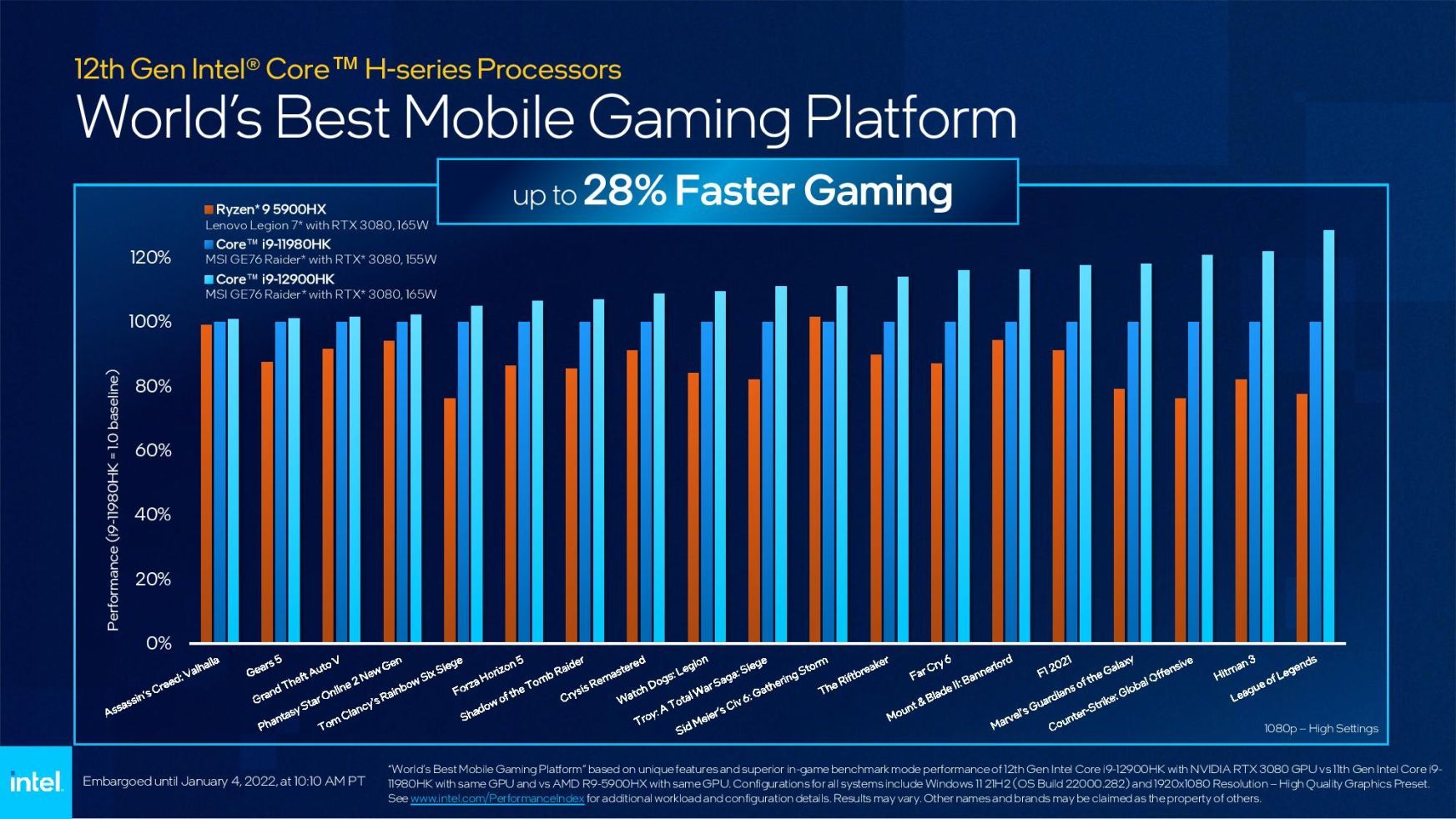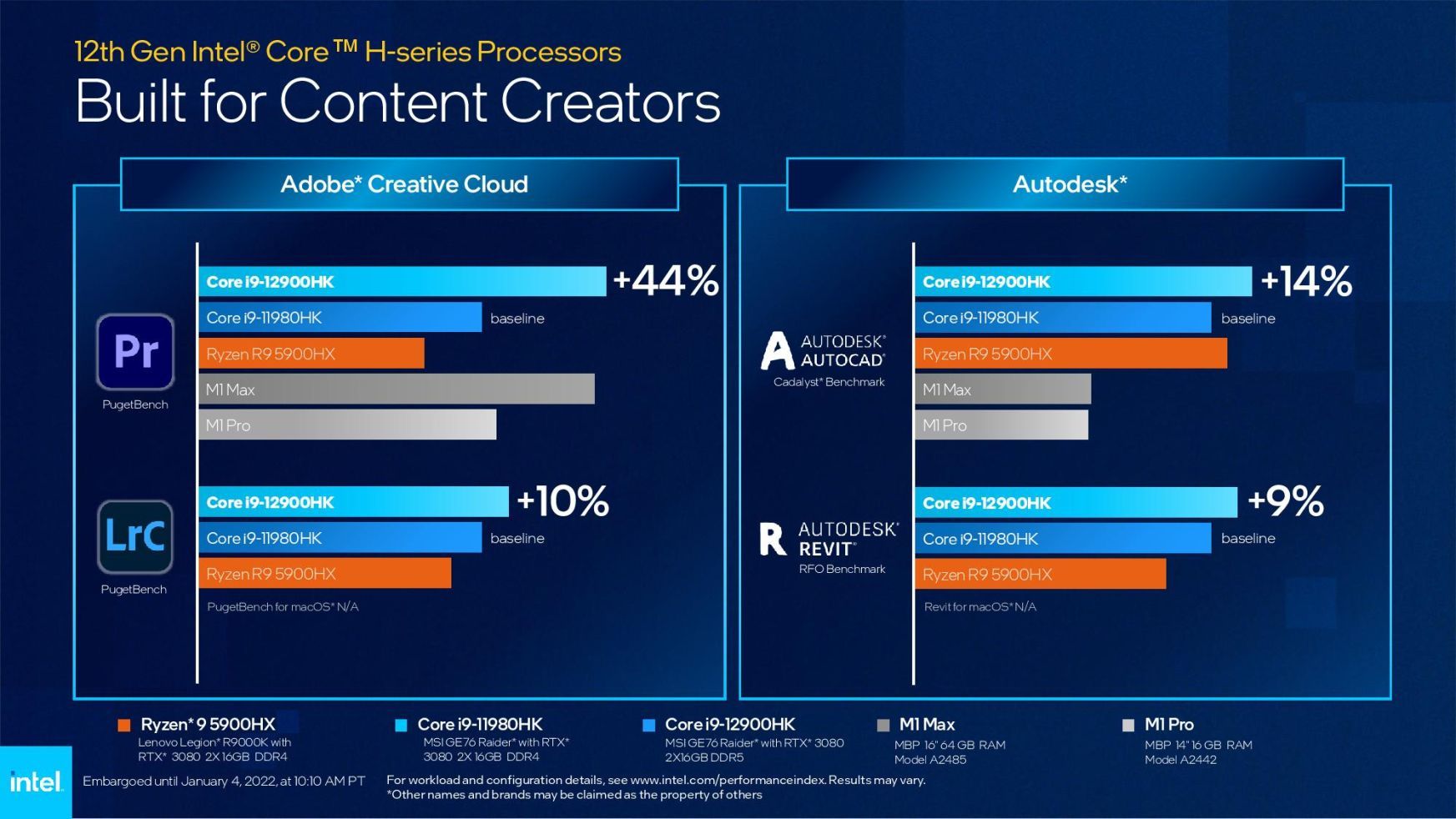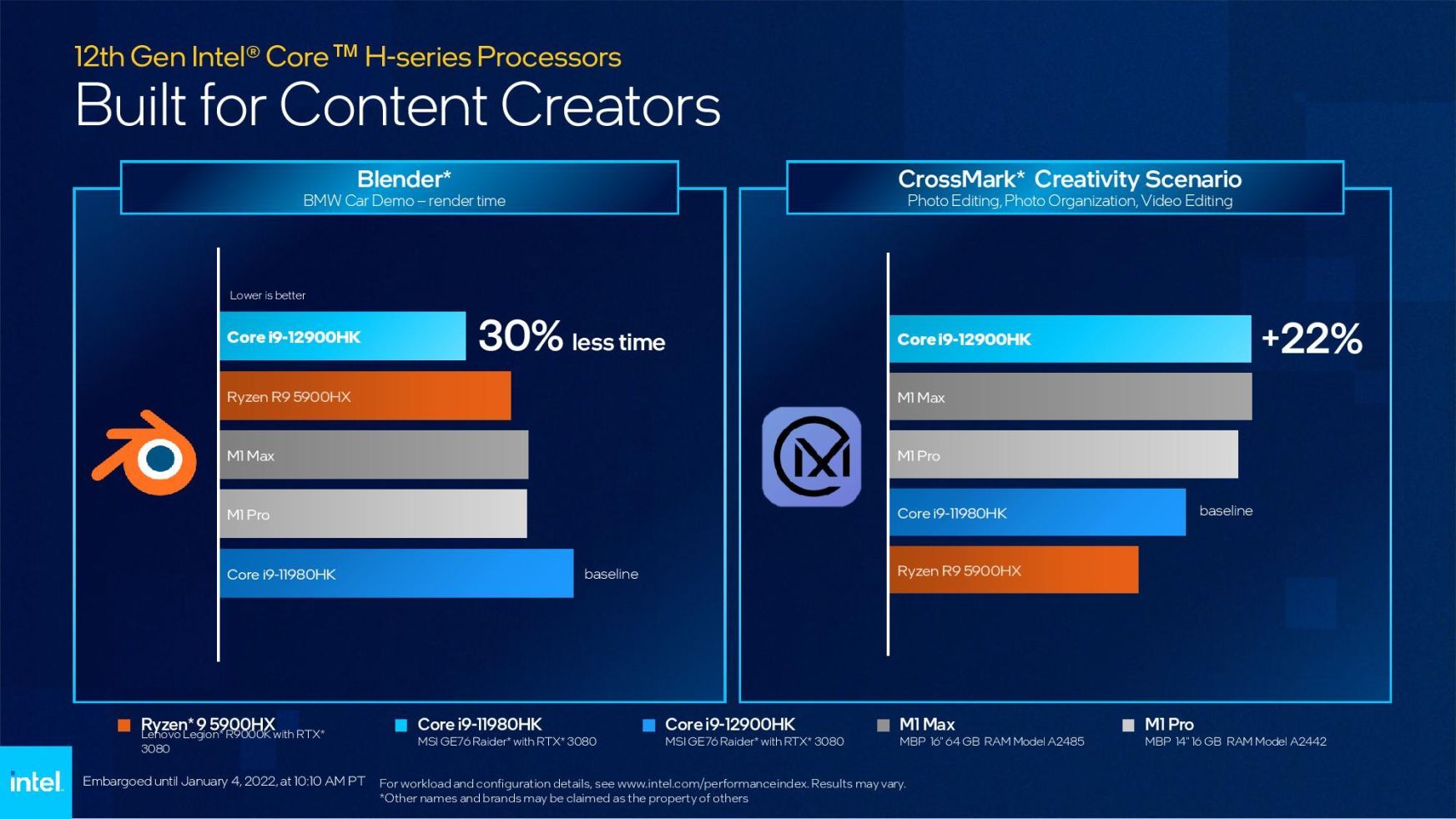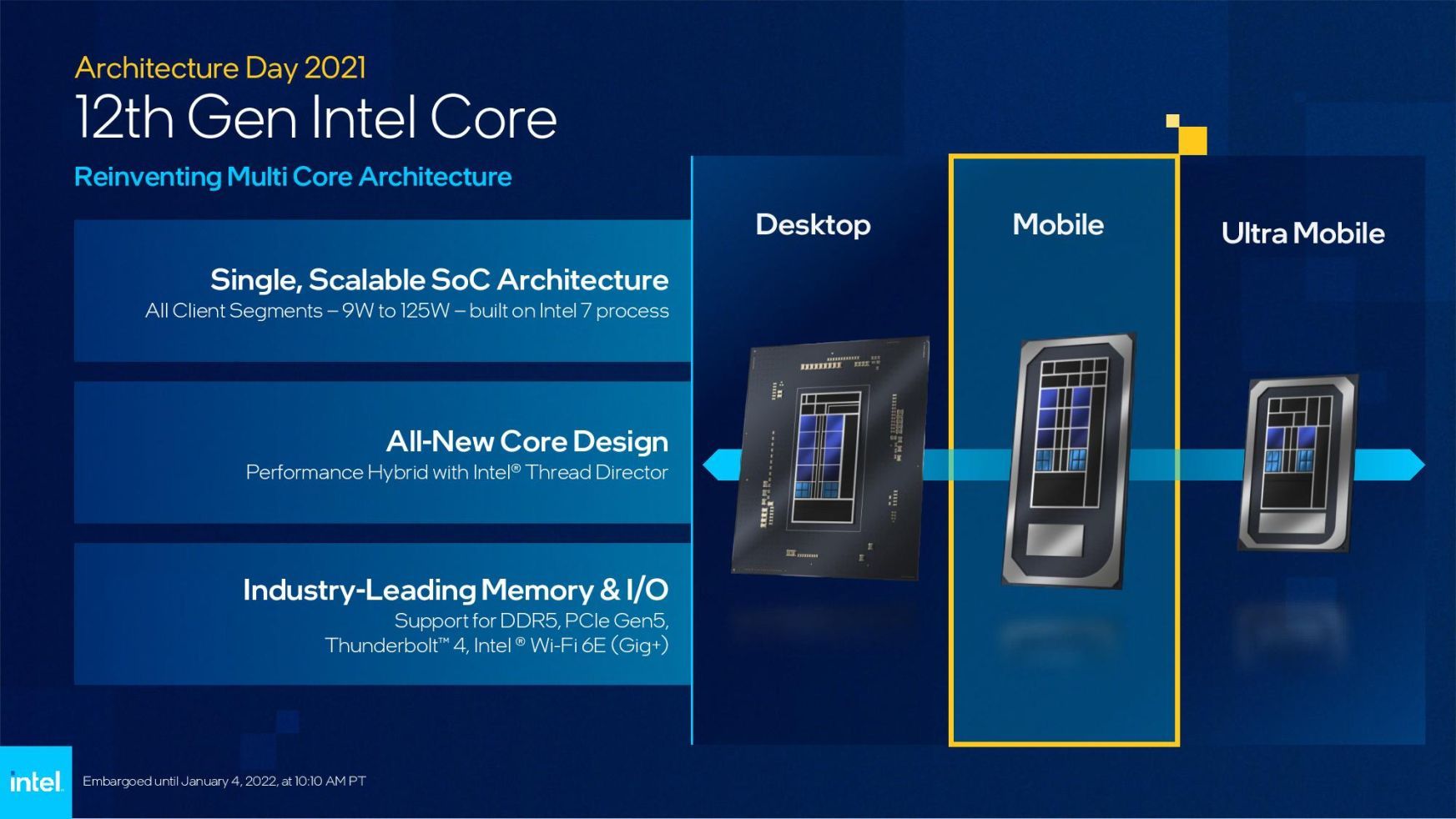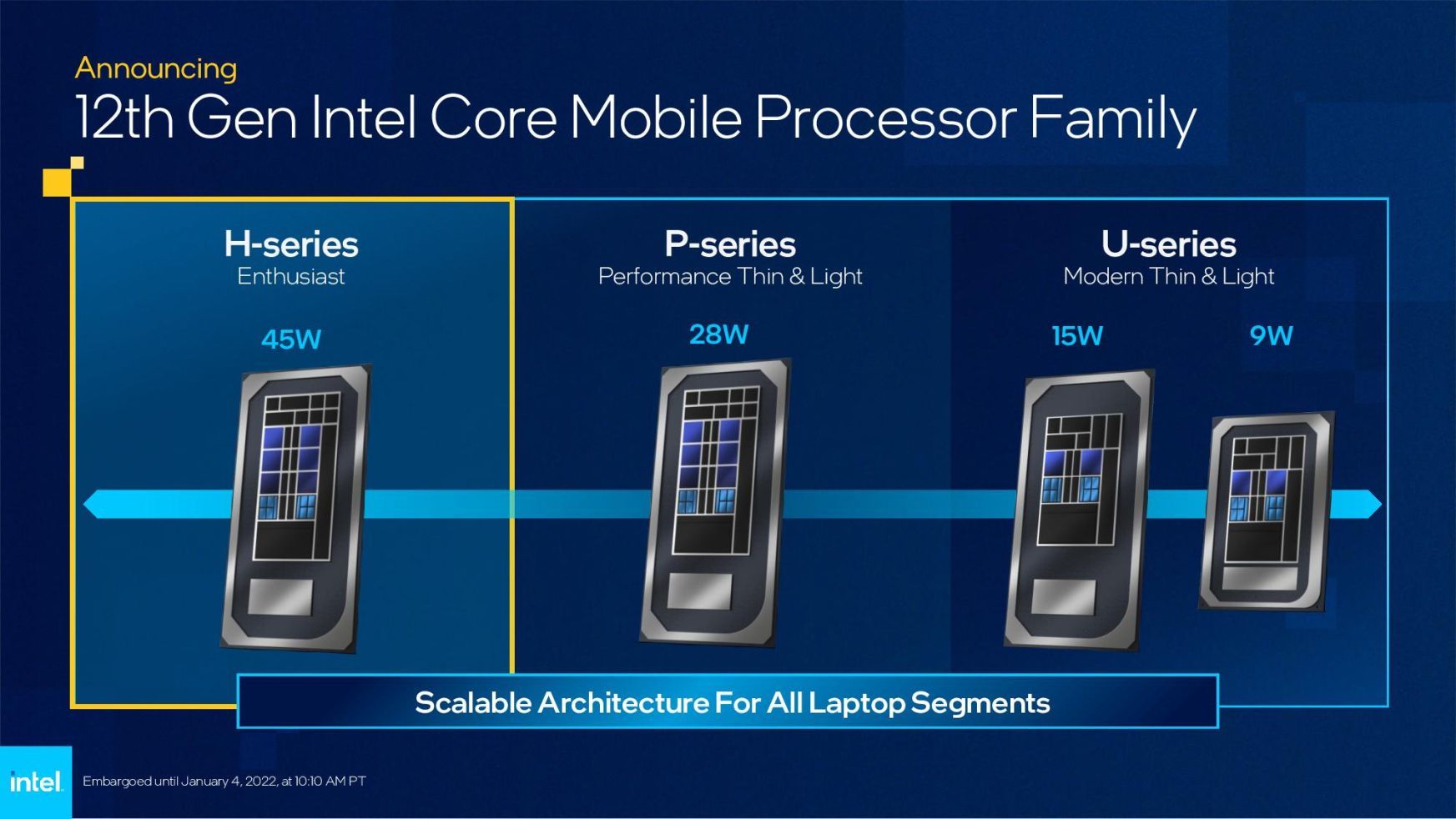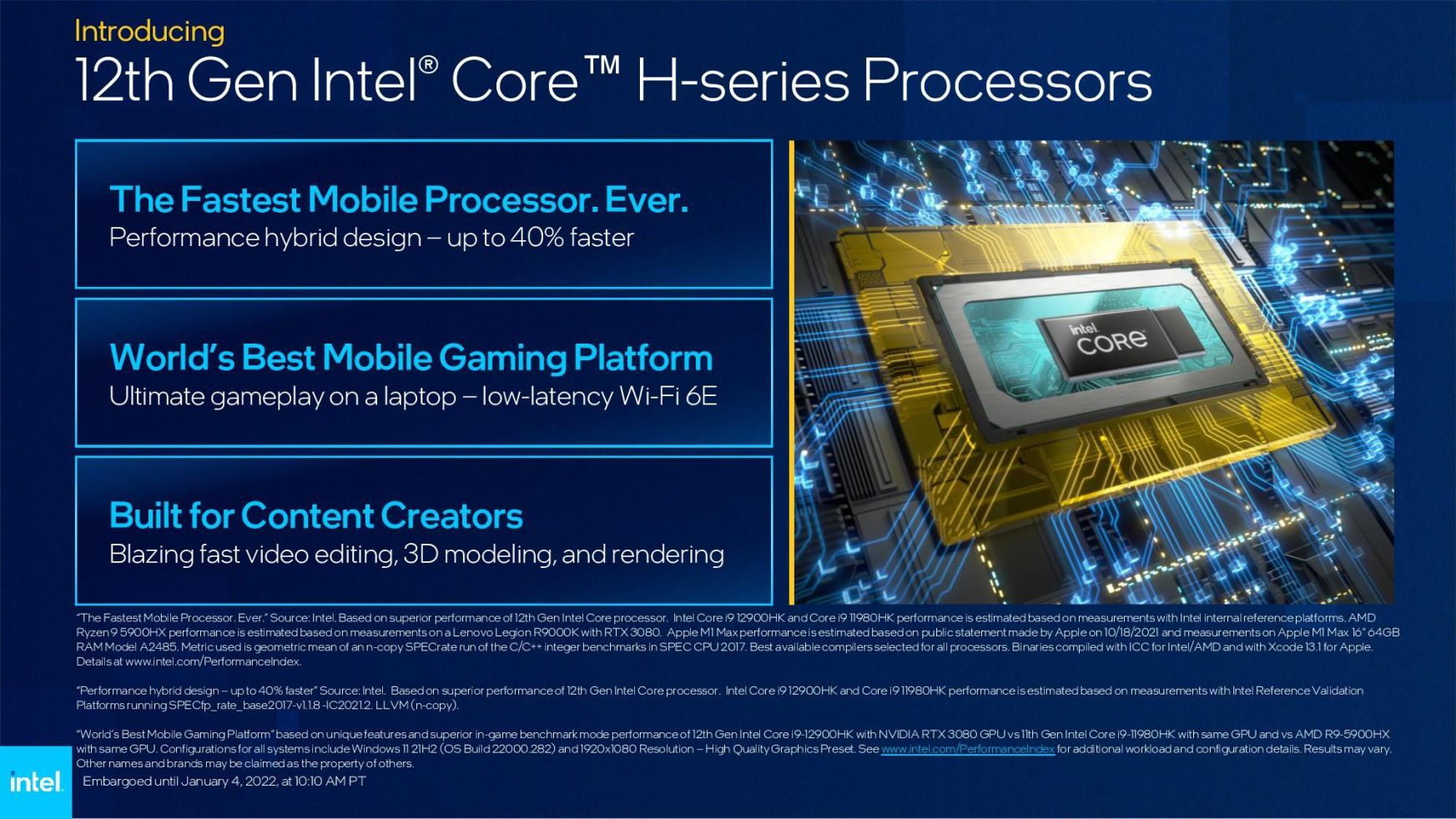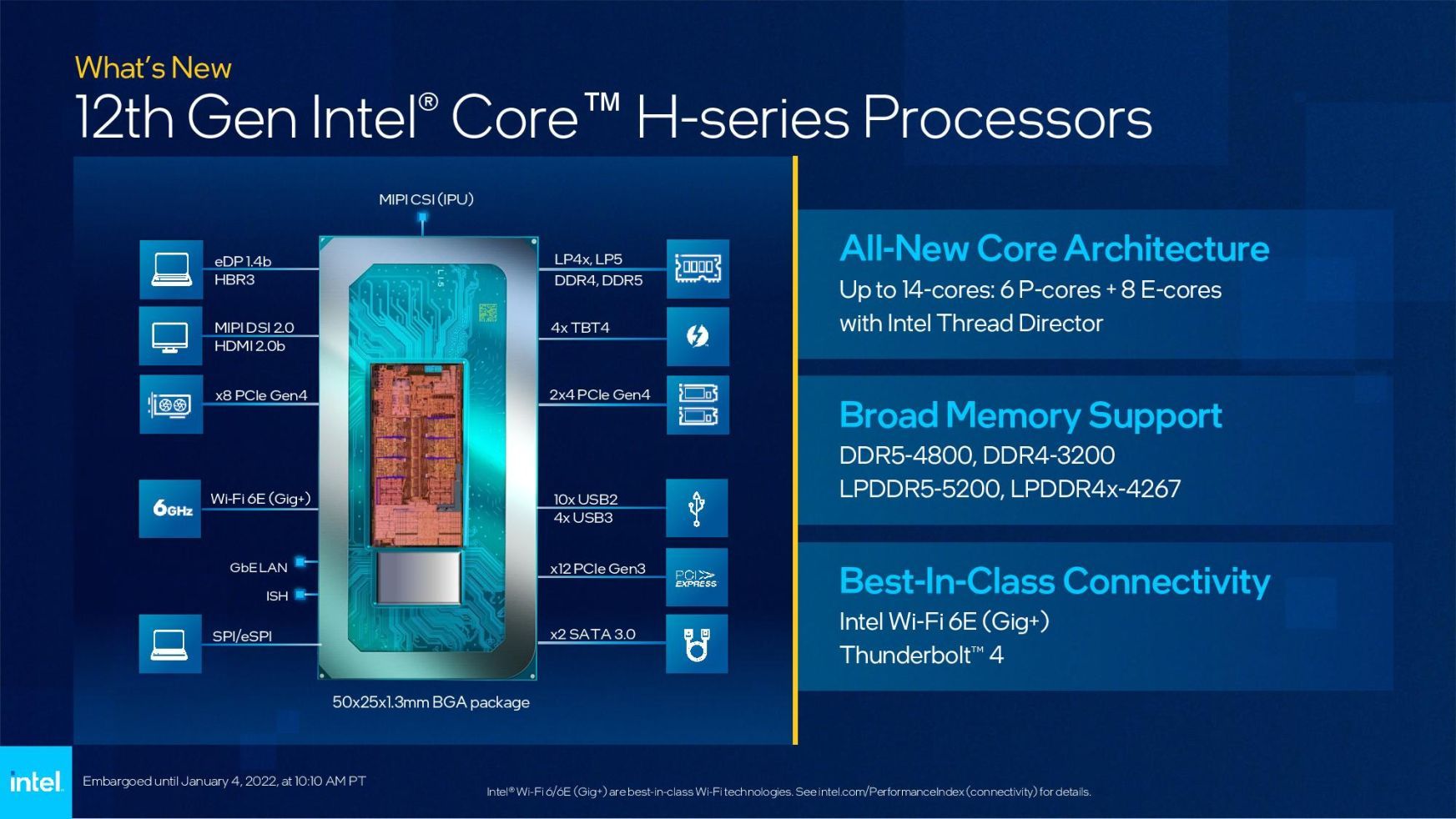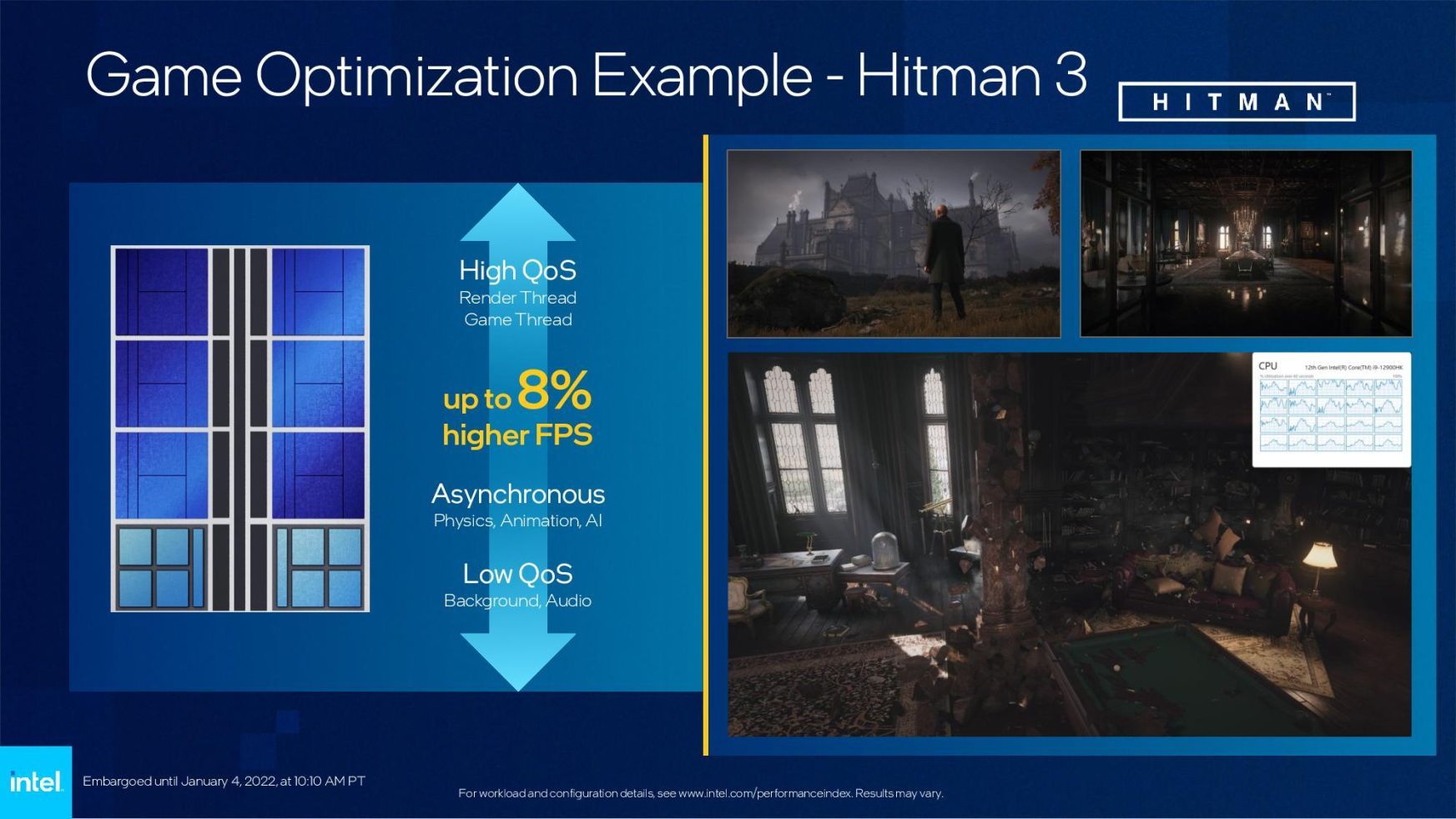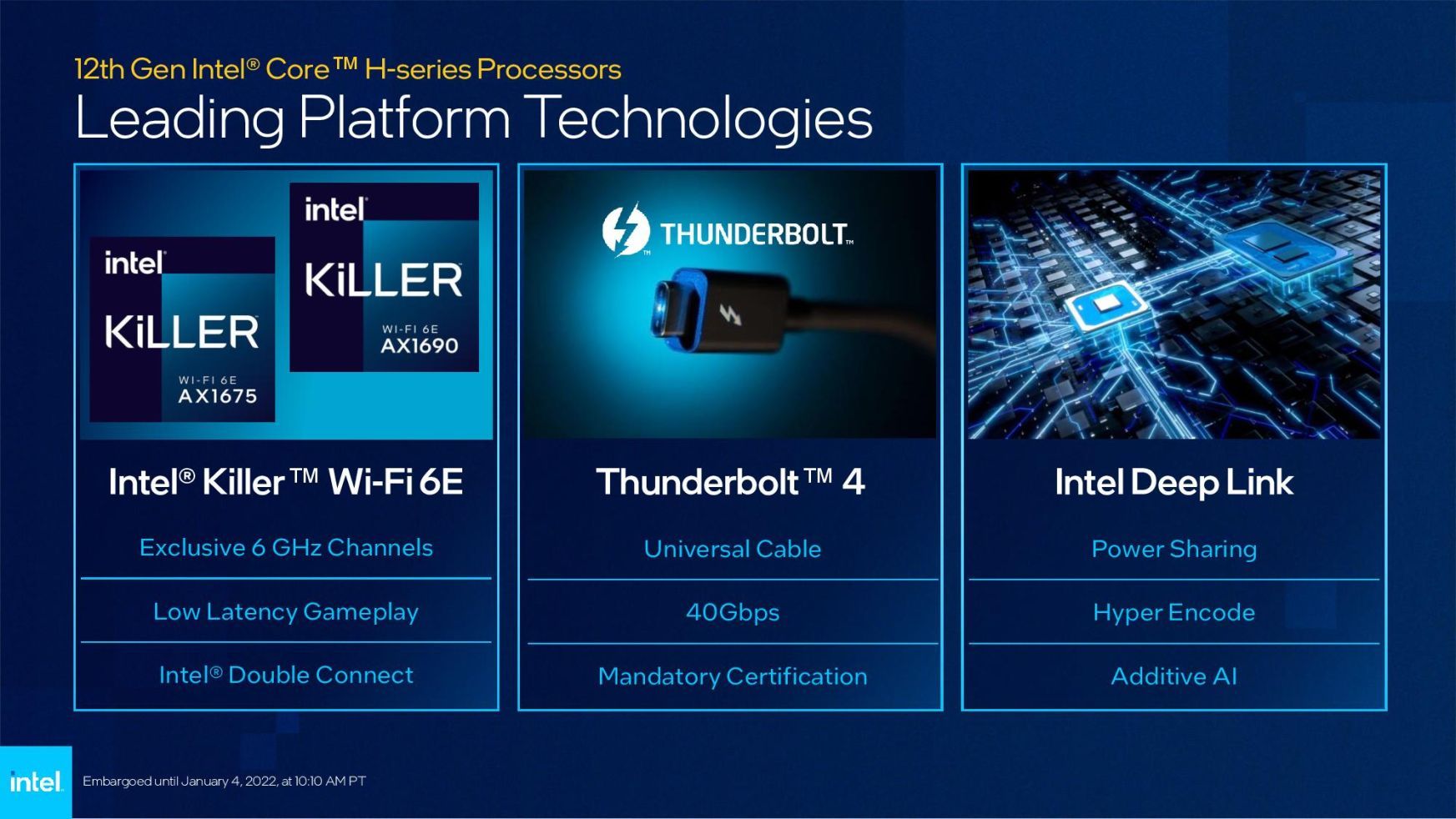Intel Unveils Full 12th-Gen Alder Lake Mobile Lineup: Up to 14 Cores and 5.0 GHz
Up to 14 cores, 5.0 GHz, and 115W of peak power draw
Intel finally unveiled its full Alder Lake Mobile lineup today, including the new 45W H-series that tops out at 14 cores and a 5.0 GHz boost, the 28W P-series, and the 18W U-series models. Intel claims that its 14-core 20-thread Core i9-12900HK is now the world’s fastest mobile processor, even compared to Apple’s M1 Max and M1 Pro. Intel also claims the H-series is the world’s best mobile gaming platform with up to a 28% gain in gaming and 40% gain in creativity apps over the previous-gen models.
The chips also support leading-edge DDR5 and LPDDR5 interfaces along with PCIe 4.0 and a whole host of other connectivity options. Intel’s 12th-Gen is in full production, and the first designs hit the market in February. Let’s dive in.
Alder Lake P-Series, H-Series and U-Series Specifications
Intel's 12th-Gen Alder Lake chips feature the company's hybrid architecture, which combines a mix of larger high-performance cores paired with smaller high-efficiency cores. The chips combine big and fast Performance cores (P-cores) with clusters of small and powerful Efficiency cores (E-cores) that chew through background processes. The Golden Cove architecture powers the 'big' P-cores, while the 'little' E-cores come with the Gracemont architecture. That means these chips will run best with Windows 11 due to its Thread Director technology.
The Alder Lake chips support DDR5-4800 and LPDDR5-5300, while Apple supports LPDDR-6400 and AMD has LPDDR5-5500. You’ll only find the DDR5 interfaces on the higher-end products, and support for standard DDR5 enables end-user configurability. Intel also has options for DDR4-3200 and LRPDDR4x-4267 interfaces, which you’ll find DDR4 options on the more value-oriented platforms. All told, the Alder Lake platform supports four different types of memory technologies, which Intel says is a first for a mobile platform.
Intel also supports the PCIe 5.0 interface for desktop chips but cited both a lack of end-user devices and a lack of time to qualify the faster interface for the mobile models. As such, all of the Alder Lake mobile chips only support PCIe 4.0.
Intel’s H-series lineup spans the Core i9, i7, and i5 families with a total of eight 45W SKUs designed for high-end laptops. These chips can consume up to 115W for short periods during intense work (duration varies based on the laptop’s cooling capabilities), which will invariably impact power consumption. Intel hasn’t provided battery life projections yet (it says it will in the future) but is frank that the Alder Lake series is tuned for performance. As such, we should expect higher gen-on-gen performance but similar battery life. Intel’s performance benchmarks below are impressive, but similar battery life won’t do much to address the elephant in the room: The Apple M1-based laptops.
As you’ll notice, the Alder Lake chips top out at six performance cores while Intel’s previous-gen mobile processors had up to ten cores. Intel augments the six P-cores with up to eight E-cores, which allows the processor to provide similar or better performance in multi-threaded workloads than the previous-gen ten core models. Naturally, the P-cores’ higher IPC also delivers more performance in single-threaded work.
The Core i9-12900HK is the halo chip with six P-cores and eight E-cores, with the former operating at up to 5.0 GHz while the latter boosts to 3.8 GHz. The P-cores feature hyperthreading, which means each host two threads, while the E-cores are single-threaded. As a result, the Core i9-12900HK has 14 cores and 20 threads. It also comes armed with the Intel Iris Xe graphics engine with 96 EUs. (some of the i7 and i5 models have fewer EUs).
Intel also unveiled the specifications for its P- and U-series chips but didn’t provide any additional commentary. However, we can see that the P-series chips have a 28W TDP and jump to a 64W TDP under load. These chips come with either four or six P-cores paired with eight E-cores. These chips are designed for performance thin-and-light laptops.
The U-series is designed for thin-and-lights and supports default 9 or 15W TDPs, but can jump to 29W or 55W, which is quite the dynamic range. The U-series models come with two P-cores and either four or eight E-cores. The U-series drops down to five-core six-thread Pentium and Celeron models, an odd arrangement that’s reminiscent of Lakefield, Intel’s first hybrid chip. These U- and P-series chips will come to market later in Q1, and Intel says it will share more details then.
Alder Lake Mobile Performance Benchmarks
Intel shared its own internal benchmarks, but as with all vendor-provided tests, take them with a grain of salt. Intel shared the Core i9-12900HK’s power/performance curve based on specrate_2017 integer and copy workloads, showing that the chip has higher performance than the Apple M1 Max and Ryzen 9 5900HX across the full power envelope. Intel says it estimated the 12900HK’s performance with a normalized 45W value for this test. It also used the best memory and compiler option for each chip, meaning it used DDR5 and the ICC compiler. As such, you should view this result with more skepticism than usual.
Intel also provided gaming benchmarks with the Core i912900HK squaring off with the Ryzen 9 5900HX across a broad range of game titles, claiming an “up to” 28% advantage in gaming with both chips tested at a 165W TDP and an RTX 3080 GPU.
Turning to productivity applications, Intel showed its Core i9-12900K taking on the Ryzen 9 5900HX and the M1 Max and M1 Pro in a spate of workloads. In Blender, the Intel chip took 30% less time to finish the job than the 11980HK but beat the 5900HX and M1 chips by smaller margins. It also tied the M1 Max and beat the M1 Pro slightly in the CrossMark creativity benchmark while beating the 5900HX thoroughly. Intel also shared testing with Adobe Creative Cloud and Autodesk, both of which had issues running with the M1 Max and Pro in some tests.
Alder Lake Features and Platform
As we covered earlier, Intel’s Alder Lake platform supports four different types of memory. The chip rides on a 50x25mm BGA package and supports 16 lanes of PCIe 4.0, with eight lanes dedicated to a discreet GPU and two x4 connections for M.2 SSDs. It also supports four Thunderbolt 4 connections that operate at 40 Gbps apiece. As before, Intel has integrated the digital portion of its Wi-Fi 6E (Gig+) connection directly into the chip, while the RF companion module connects externally.
Intel has integrated the PCH onto the same package as the Alder Lake die, which helps reduce complexity and provides incremental power savings. The PCH provides twelve PCIe 3.0 lanes, two SATA three connections, and ten USB 2 and four USB 3 connections.
Intel also warps some of its software and unique features around the platform. That includes the Killer Wi-Fi 6E that has exclusive 6GHz channels so you can game on either the 6GHz or 5GHz band while the 2.4 GHz band handles background traffic. The solution can also aggregate the channels to get up to three gigabits/s of throughput.
Intel also has its Deep Link solution coming to future laptops that feature its Arc dedicated GPUs. Those are coming to market soon, but Intel teased that laptops will feature a power-sharing mechanism to intelligently allocate power between the CPU and GPU based on workload, much like AMD’s SmartShift. Additionally, Arc supports Deep Link, which allows both the CPU and GPU to run a single encoding job simultaneously, thus improving performance by up to 40%.
Intel says its 12th-gen chips are in full production, and over 100 designs will come to market this year. The first devices begin shipping in February.
© 2025 Zeon Technology
